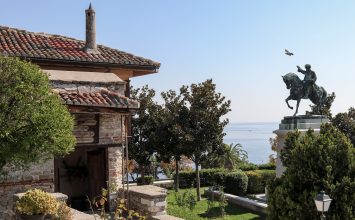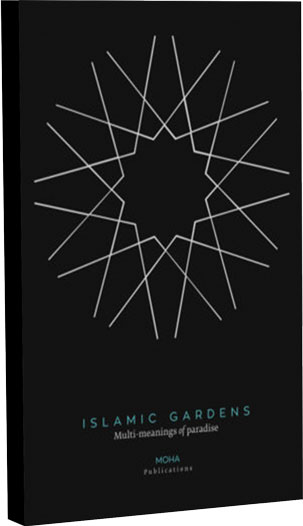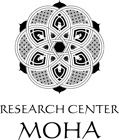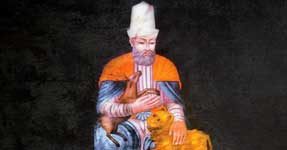Media outlets around the world have grown increasingly indifferent to the brutality of the ongoing war in Syria, numbed by more than four years of senseless killing and destruction in that cursed country. But a recent attack finally touched a raw nerve among global literati, for the victim is someone with whom they can identify. On August 18, 2015, the Islamic State of Iraq and Syria beheaded Khaled al-Asaad, the eighty-three-year-old former director of antiquities for the ancient site of Palmyra, before hanging his mutilated body from a traffic light in the city he loved and refused to leave, with his severed, bespectacled head tucked between his feet.
The first terse reports on the killing identified al-Asaad according to his professional achievements: He was a historian who acquired his vast archaeological knowledge on the job, an open-minded manager of one of the most important sites of antiquity, and an active member of Syria’s ruling Baath Party, as well as a prolific author and consummate teacher. But later, news analyses and major cultural officials around the globe began to describe him as the “Keeper of Palmyra” and as the “martyr” of the city and its “hero.” Indeed, for forty years, from 1963 to 2003, al-Asaad was the go-to authority on the city, where he led excavations, made stunning new discoveries, and supervised the various foreign archaeological expeditions working in and around Palmyra. He published several books, pamphlets, and articles on the subject, and kept an active social and social-media presence introducing his beloved city to the world and explaining its glorious history and culture. Moreover, many commentators voiced the opinion that he was tortured and executed because he refused to divulge the location of the treasures hidden by the Syrian authorities when they fled Palmyra on May 21, 2015, before the advancing New Mongols of ISIS, although there is no evidence of that.
Almost immediately, ISIS followed the gruesome execution of al-Asaad by blowing up the Temple of Baal Shamin, a first-century CE sanctuary for the Lord of Heaven (from whom the building takes its name), one of the two supreme deities in Palmyra, whose polytheistic pantheon contained various deities. (Most of these could be traced to Semitic origins, while some corresponded to Roman gods, reflecting the hybrid religions that developed in Syria during the Hellenistic and Roman periods.) While ISIS in its earlier demolitions in ancient sites in northern Iraq ostensibly targeted idolatry, focusing on grand statues, the Temple of Baal Shamin no longer contained any figural representation. The carved images that once adorned it have long been scattered among museums around the world, which, ironically, means that the systematic plundering of these artifacts by European excavators during the colonial period resulted in their survival. The temple itself was a small, elegant porticoed classical shrine fronted by a doubly colonnaded vestibule of a modified Corinthian order. It lay on the northeastern end of the ancient city and provided the first glimpse of the magnificent ruins from the terrace of the quaint Hotel Zenobia, built at the turn of the twentieth century, where the cognoscenti stayed when visiting Palmyra.
With these two hideous crimes, ISIS proved once again its determination to carry out a spectacular desecration of every single principle of humanism as it came to be defined in modern times. The group has already executed thousands of innocent civilians and a number of fighters in the most barbaric ways and for what seem to be ludicrous reasons. The group has restituted slavery and treated members of religious minorities under its yoke, especially women and girls, as chattel. It has totally banished women from public life and forced them to be covered in black from head to toe. It has reintroduced language and practices about polity, sociability, and belief that have not been heard or performed in the land it now controls for centuries. And, as the recent events in Palmyra reminded us, it has destroyed numerous artistic treasures in museums and archaeological sites in Iraq and Syria. Why is ISIS engaged in this vicious behavior?
Learned opinions vary. But most either attribute the group’s acts to an intrinsic savagery, as viewed from the perspective of what is assumed to be our shared humanity, or, if they happen to be voiced from an Islamic pulpit, dismiss ISIS’s claim to be applying Islamic law to the letter and point out the more tolerant, indeed more humanistic, side of Islam. What no one seems able to concede is our inability to comprehend ISIS’s actions from a modern standpoint. Indeed, ISIS is operating within an epistemological frame of reference that belongs to an earlier time, a time before the age of reason, the separation of politics and religion, the abolition of slavery, the striving for gender equality, the widespread application of legal protections for the individual, and the universalization of human rights redefined our shared understanding of the human community. If we want to name it, ISIS’s frame of reference may be aptly called medieval. In that sense, ISIS’s doctrine is not so different from those of many ultraconservative fundamentalists around the world, although the faction has distinguished itself through its wanton and garish use of extreme violence—which, by the way, is also medieval in its reference. This is why grasping the meaning of ISIS’s shocking acts has been quite difficult for our contemporary thinking, steeped as it is in its posthumanistic rationality and delicate, if sometimes hypocritical, sensibilities.
To elucidate what I mean, one need only look at the indictment crudely handwritten on the placard that hung from al-Asaad’s waist in the grisly photo published online by ISIS to explain the historical significance of the language used to describe his alleged crimes. First, his executioners listed his middle name, Muhammad, which underscores his Islamic faith. This helps us understand the significance of the title they gave him, al-murtadd, which was translated in most media reports as “the apostate.” Technically, the translation is correct. But in an Islamic context, a murtadd is not just any apostate, but someone who reneged on Islam only; the followers of other religions are actively encouraged to abandon their birth faiths and convert to Islam, whereas a murtadd is to be executed according to all Islamic schools of jurisprudence. The conceptual distinction will become clearer if we consider the semantic origin of murtadd, which derives from the verb irtadd, “to relapse,” or “to revert from.” The underlying notion here is that once a person arrives at Islam, the final and true religion—even if only by accident of birth—he or she will have no right to revert to faiths deemed lesser in the hierarchy of creeds as viewed from an Islamic historical perspective.
Of course al-Asaad did not “revert from” Islam. It is ISIS’s interpretation of his scholarship and actions that qualified him as a murtadd. This comes across in the rest of the text, where al-Asaad is dubbed a supporter of the Nusayri government (the derogatory term used to designate the sectarian Alawite regime of Bashar al-Assad) because of five transgressions enumerated on the indictment list. Items number one and two are what interest us here, as items three, four, and five describe, respectively, his alleged enthusiasm for Shiite Iran and his contacts with two highly placed members of the security apparatus of the Syrian regime.
The first accusation is that al-Asaad represented Syria at “atheist” or “infidel” conferences (mu’tamarat al-kufr). This is puzzling. Al-Asaad attended conferences on the history and archaeology of antiquity, especially in classical and Roman Syria, where of course there is no mention of the religious beliefs of the participants. The infidelity in question may thus be a reference to the faith of other participants, many of whom were Christian or Jewish; ISIS always labels Christians and Jews as infidels (and it is not the only Islamic group that does so these days). Or “infidelity” may refer to the topics of these conferences, which focused on highlighting the cultural achievements of a pre-Islamic era; ISIS dubs the time before Islam the period of ignorance (jahiliyya), whose main perceived deficiency was the reigning polytheism that was forcibly eliminated as Islam spread across Arabia.
Item two clarifies this point further. It charges al-Asaad of having been the director of the idols (asnam) of historic Palmyra. Despite its syntactic incorrectness, this statement ominously brings a particularly thorny issue to the fore: the presumed Islamic condemnation of all figural representation because it challenges God’s creation and therefore engenders idolatry. This issue has provoked heated exegetical and artistic debates throughout Islamic history, and the most accepted opinion among the majority of Islamic authorities over the centuries is that statues are the most offensive form of figural representation, for they strive to imitate nature more than any other. This is the justification that ISIS has offered for its destruction of ancient statues. But ISIS now seems to have expanded its wrath to include those who cared for these “idols,” as al-Asaad unquestionably did.
To a modern observer, the accusations against al-Asaad seem absurd. But to a fundamentalist who seeks certainty in medieval texts and practices and rejects all modern readings––indeed, modern ideas altogether––as heresies (bida‘, singular bid‘a), they carry a coherent logic. This logic finds its authentication solely in the Qur’an and in the sayings and deeds of the Righteous Predecessors (al-salaf al-salih), usually understood to comprise only the Prophet Muhammad, his companions, and his immediate successors. The goal of this fundamentalist thinking is a return to that magical moment of complete adherence to the tenets of the original, unadulterated Islam. Anachronism is immaterial and relativism unacceptable—indeed, historical perspective itself is limited to the foundational period of the Prophet and his companions. These were some of the inconsistencies that pioneering Islamic reformers grappled with in the early twentieth century. What is most distressing today is not only that a growing number of contemporary fundamentalist interpreters of Islam neglect and even negate the teaching of these pioneers, but that they reject the critical and theoretical tools that made thinking about reform possible in the first place. Needless to say, the world is paying a horrendous price for this intellectual retreat.
After the submission of this article for publication, ISIS destroyed the Bel Temple (dedicated 32 CE), the main sanctuary of Palmyra and one of the most complete and monumental temples of the Roman era in the world, and blew up at least three of the city’s famed tomb towers. Later, they also destroyed the triumphal arch leading to the city’s main colonnaded avenue. These brutal acts indicate that ISIS is determined to obliterate the entire historical heritage of Palmyra.
Nasser Rabbat is the Aga Khan Professor and the Director of the Aga Khan Program for Islamic Architecture at the Massachusetts Institute of Technology.








